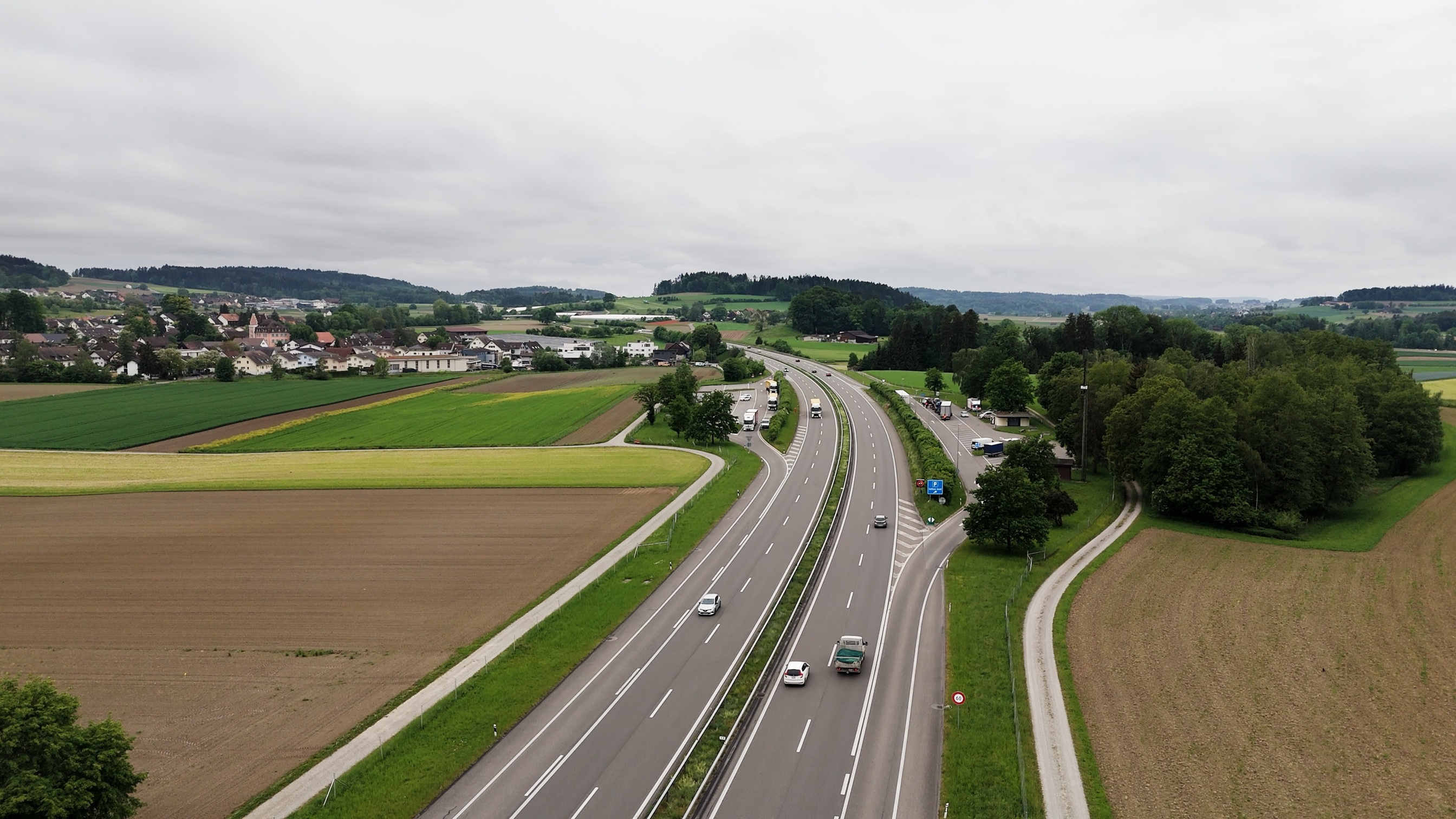
Switzerland’s unique landscapes make it a magnet for tourists – but it is also an industrial nation and transit country in the heart of Europe. Truck numbers are rising and vehicles are becoming heavier; many are overloaded – a major problem both for road safety and infrastructure damage.
Swiss police regularly carry out commercial vehicle overload inspections on behalf of the Federal Roads Office (Fedro). In 2023, 124,783 trucks, articulated lorries, delivery vans and buses were inspected, resulting in 24,240 complaints and 4,775 vehicles prevented from continuing their journey.
In 2021, police in the canton of Thurgau opted for the KiTraffic Digital WiM system from Kistler to help. A WiM measuring point was set up near the Kefikon motorway rest area as part of a pilot project, looking to acquire accurate measurements of axle load and total weight of vehicles in traffic flowing at normal speeds (from 10km/h to 130 km/h).
KiTraffic Digital achieves class F5 accuracy as certified by OIML (the International Organisation of Legal Metrology), which means vehicle weights and axle loads are recorded with a deviation of less than 2.5%.
Road safety
For pre-selection, Lineas Digital sensors are installed together with an ANPR camera at a sufficient distance ahead of the rest area: suspect vehicles appear immediately on the officers' tablets, where Kistler Checkpoint software displays the vehicle image, number plate and weight data. Axle loads and total vehicle weights of suspicious trucks are checked again with static scales; at the same time, they are inspected for length and excess width.
"Commercial vehicle overload inspections are particularly important because they play a key part in road safety,” says Andreas Keller, head of traffic monitoring at Thurgau’s Traffic and Lake Police. “Overweight vehicles have a longer braking distance and a longer stopping distance, so they put all other road users at risk.”
Successful calibration
The system at Kefikon was initially set up on one lane and, following calibration, was certified by Metas, the Swiss Federal Institute of Metrology. “Multiple calibration runs were necessary for the certification so the system could be calibrated for all possible speeds, vehicle types and lane positions,” says Ingrid Sagorz, product manager, traffic solutions, at Kistler.
“We then ran an extensive test programme together with Metas to determine and document the accuracy of the weight measurement.”

In 2022, the WiM system was installed in the opposite direction, and this was followed in May 2024 by the deployment of Lineas Digital sensors in the second lane and on the hard shoulder, increasing the total number of sensors per direction of travel from eight to 20.
“The result is that we attain a very high level of accuracy for dynamic weight measurement,” Sagorz says.
Specific checks
“The hit rate for commercial vehicle overload inspections is higher thanks to the system, because we can perform explicit and more specific checks on moving vehicles that are too heavy,” agrees Keller.
Ulrich Gloor, head of Traffic and Lake Police, concludes: “Technology will have to give us increasing support with our work and in this context, I can imagine that we’ll be able to certify the system so we can automate law enforcement – especially in the low-threshold range – in a similar way to speed checks.”
At present there is no measurement between the lanes at Kefikon but Kistler says it is working on this new feature and a comprehensive re-certification of the system by the OIML is scheduled for 2025. More than 150 Lineas Digital sensors have so far been installed in Europe, US and Brazil.









